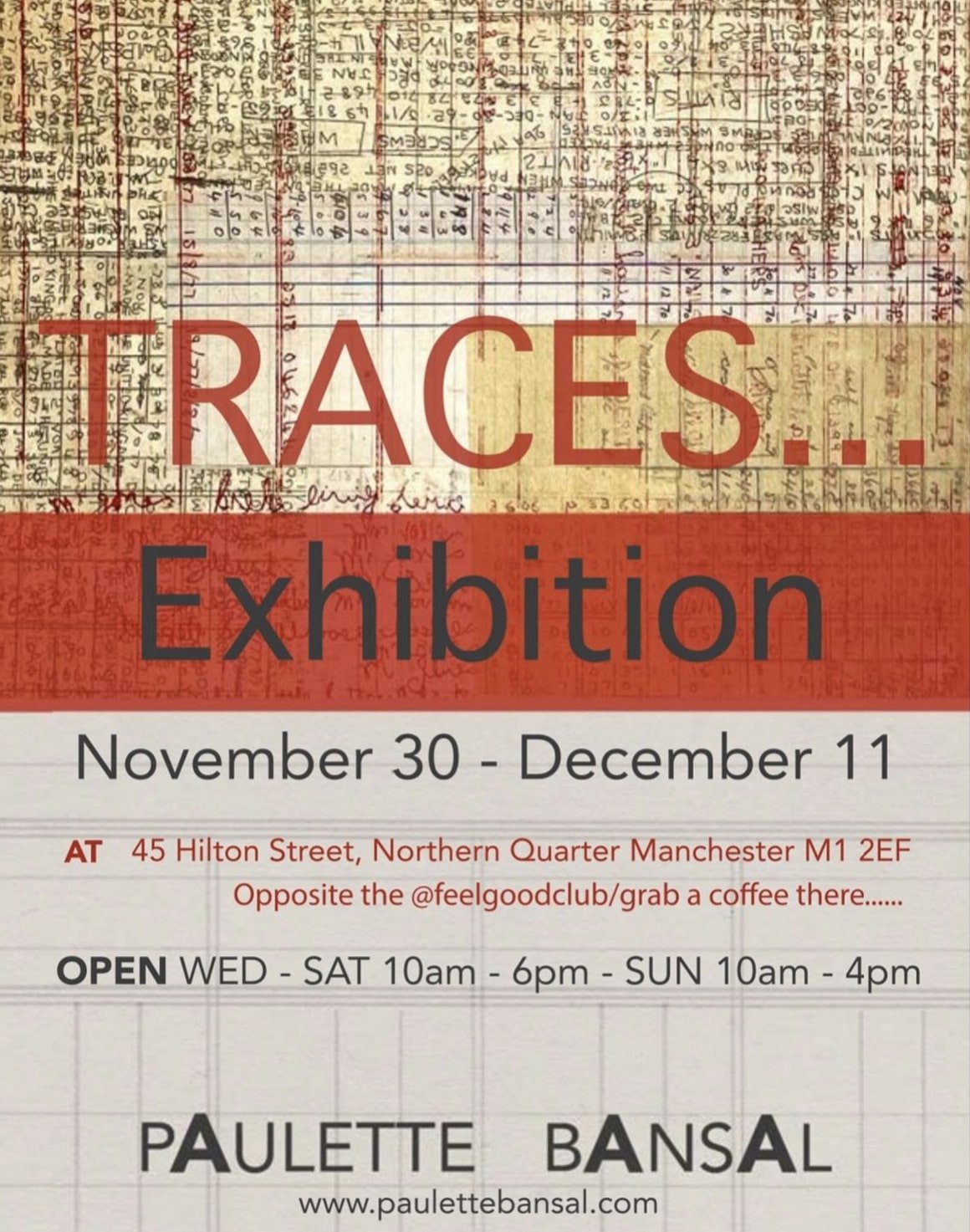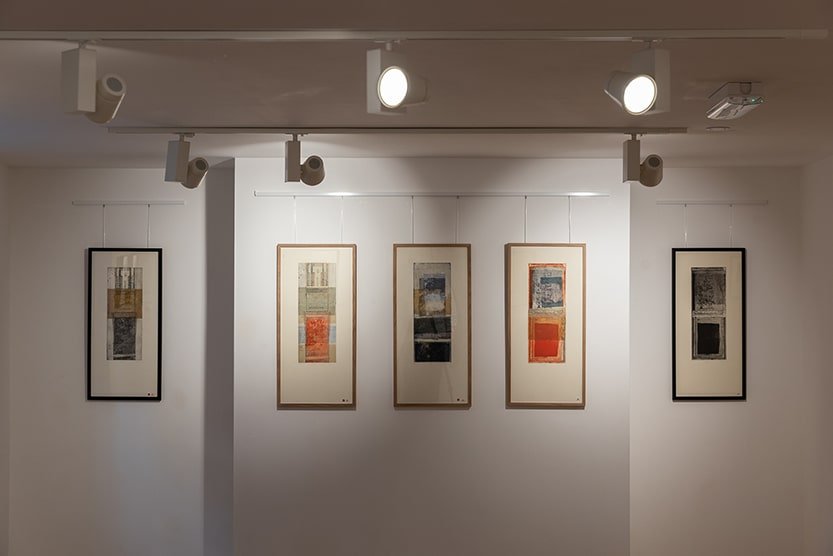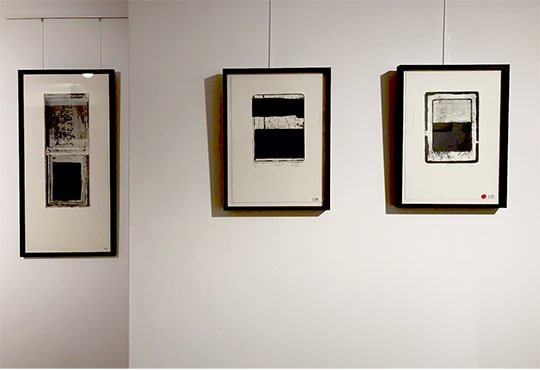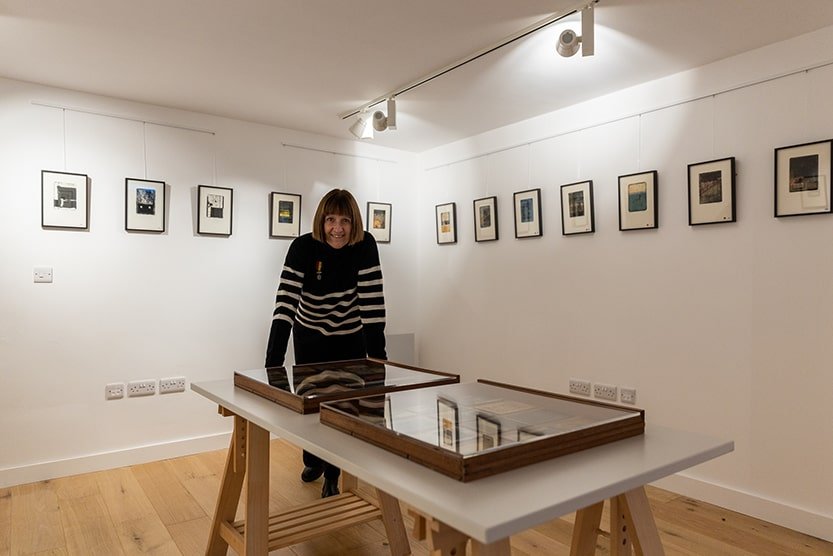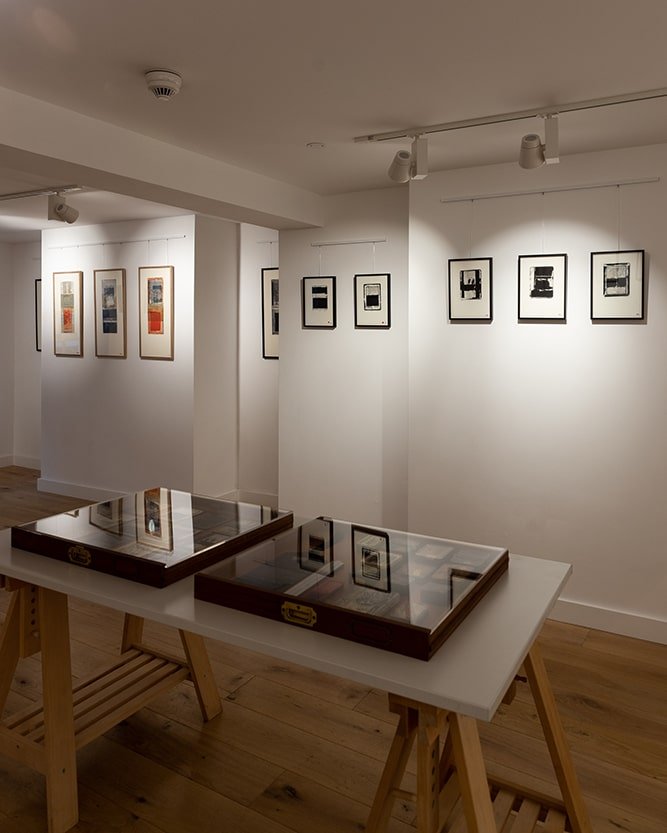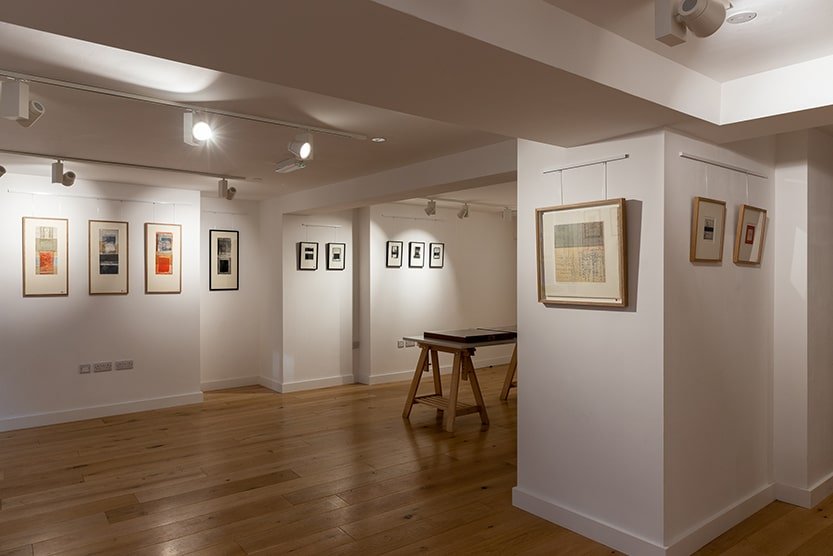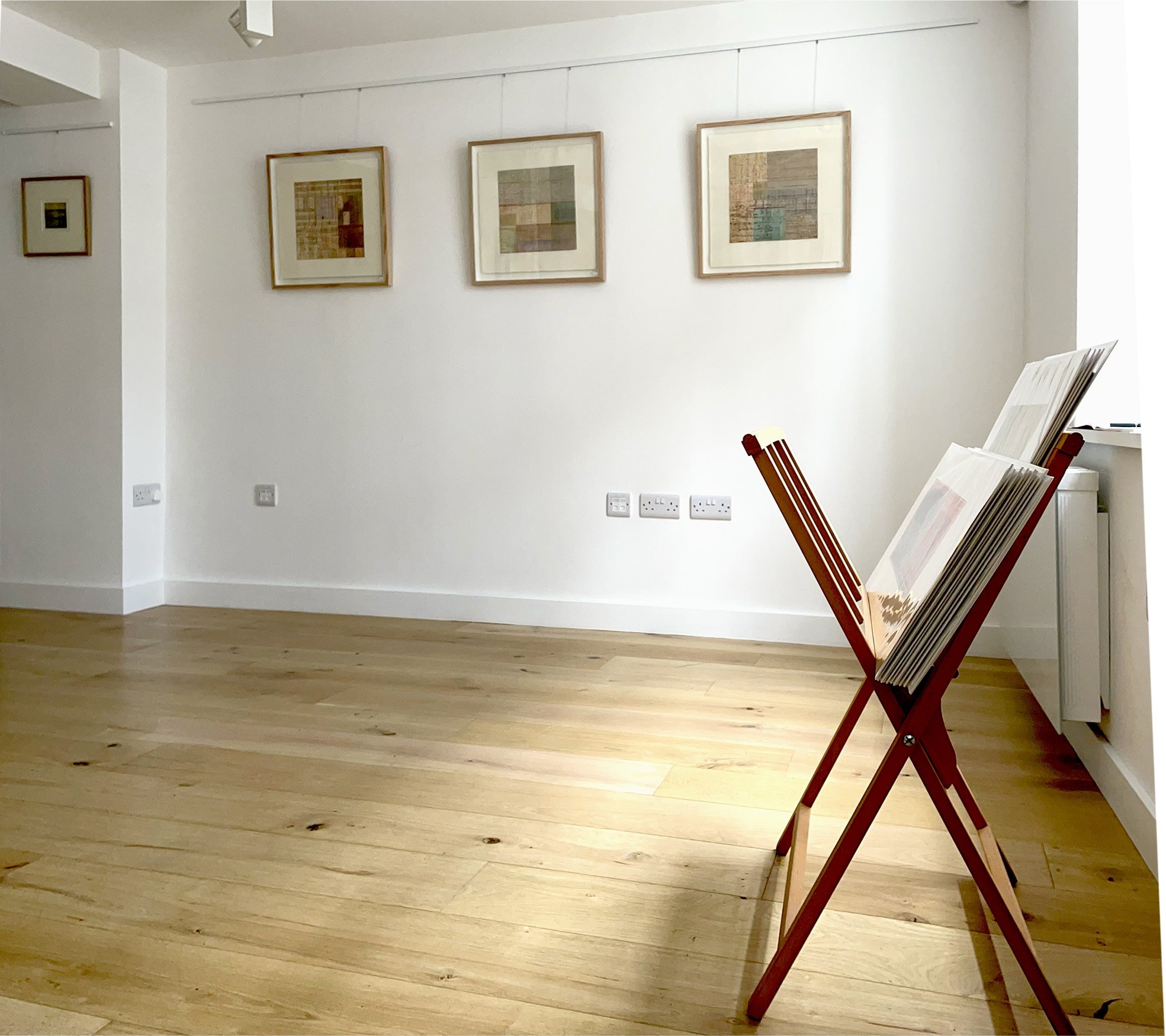‘A fingerprint, scratch or trace of handwriting marks a memory in time, a memory that is personal and dear’.
Bansal is currently undertaking a new and personal direction in her work tracing the history of a collection of objects inherited from her late father. Deeply rooted within cataloguing, conservation, and archives, Bansal has started to meticulously record the varying marks and handwriting mainly through drawing and printmaking. The resulting work will not only act as a personal remembrance but create a unique insight into their past.
Her initial experimentation of this subject matter has been through intaglio printmaking using both etching and collagraph plates and chine Colle. Each object/set of objects has naturally evolved into these series of prints.
Paulette Bansal Traces … A Review
Memory functions by interpreting the past in order to give it meaning.*
How we remember and what we choose to remember underpins artist printmaker, Paulette Bansal’s poignant and celebratory solo exhibition at the Hilton Street Gallery in Manchester’s Northern Quarter. Traces… draws on artefacts inherited from the artist’s late father and explores how she might visually interpret the emotional resonance and connection she feels to these objects. Alongside this, there are also considerations of how such artefacts might be archived and conserved. A final important question this very personal exhibition raises, relates to the role of the visitor to the gallery: as they view the prints and objects, what connections do they make? What is the emotional response of the viewer?
Bansal has employed a variety of print methods in presenting her material. The larger prints are created using multiple etching plates with chine Colle. Here the layering of fine, handwritten ledgers shot through with bold colour, communicate both precision and creativity. There is artistry in such records, that speaks of the mind that created, and the hand that wrote. In re-presenting these records visually, Bansal is celebrating her memory of the industry and skill of her father in a way that transcends the commonplace. She is also inviting the viewer to reach into their own memories and make their own connections. Nowhere was this more apparent than in the archived presentation of her father’s possessions, which include his slide rule and collection of ancient and battered, small tins. Such items, often old tobacco tins, are eminently collectable in today’s throwaway society and are works of art in their own way. However, these tins had been put to use, to store and organise the day to day hardware of a working life. These familiar objects have the power to invoke what Harold Rosen might describe as a constellation of connected memories, moving beyond form and function into the realms of place and context, bound up with sensory recollections of colours, smells and feelings.
I found the exhibition very moving. In the larger prints, the juxtaposition of closely filled lines of legers with numerical records and structural diagrams, spoke to me of my grandfather, an engineer by profession. A quiet, skilled man of few words, he was never without his pipe, and old tobacco tins provided for him the same eclectic storage of the minutiae of the workshop. As I looked at Bansal’s archived presentation of objects she had inherited from her father I felt I could have been looking at my grandfather’s workbench in his garage, a comforting space with the clean smell of oil and wood – a place where he was in his element; a small memory but one which contains a trace of the whole man.
Bansal’s work demonstrates her love and care and the desire to remember and preserve what these objects mean to her. In tracing the many overlaying memories an artefact might hold she is creating a collection of work that interprets the ways in which objects and memories connect to provide meaning. For the viewer, the exhibition provides a uniquely personal invitation to explore traces of their own memories through Bansal’s artistic prints and archive.
*Harold Rosen 1996 citing Frederic Bartlett 1932
Review by Dr Carole Page
